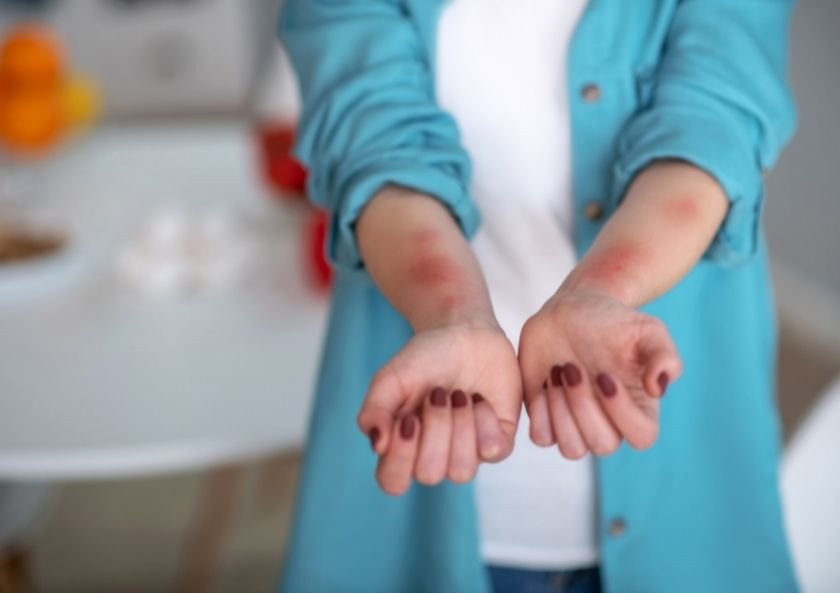While everything is normal, most of the patients often say that they don’t understand, that they start to complain of itching and redness in the body, sometimes they say that they have itchy red skin rashes all over their body when they wake up. Skin rashes, which we define as acute urticaria, appear spontaneously and may disappear on their own. In acute urticaria, sometimes the complaints are severe once and may not recur afterwards. Patients may not need medication. Especially in chronic urticaria lasting more than 6 weeks, drug treatment is required depending on the intensity of the complaints. In this article, we have written what you need to know about the treatment of urticaria.
How Is Urticaria Treated?
In the treatment, if there is an underlying disease, it is treated. Allergic urticaria angioedema will resolve completely in a short time if contact with the allergen can be cut off. If we can find the cause as a result of the tests performed for the diagnosis of urticaria, it is very important to avoid the allergic food or allergen. If we cannot detect the cause of urticaria, that is, idiopathic urticaria, drug treatment is required.
The first drugs used in the treatment of urticaria are antihistamine drugs. Normal doses of antihistamine drugs may not be sufficient. For this reason, higher doses of antihistamine drugs that can suppress the patient’s complaints or combinations can be used. Unfortunately, the most important problem with antihistamine drugs is the side effects such as drowsiness, distraction and concentration disorder, and increased appetite. Another problem is that after a while, their effectiveness is lost and they become ineffective. Therefore, patients cannot see the same effect even if they use the drugs for a long time.
Corticosteroids are other drugs that are effective in urticaria. However, long-term use causes serious side effects. Corticosteroids are sufficient to control complaints, especially in acute urticaria. In patients with intense urticaria complaints, short-term cortisone treatment can be applied. It is not recommended to use long-term cortisone treatment as it will bring side effects.
Patients who experience a life-threatening episode of angioedema or anaphylaxis respond to adrenaline (epinephrine).
Many drugs have been used for the treatment of chronic urticaria. Some of them have immunosuppressive properties. Effective results have been obtained in the treatment with immunosuppressive drugs such as cyclosproin, but it should be used very carefully because of the problems that will occur when we suppress the immune system.
Other auxiliary drugs in patients with urticaria are H2 receptor antagonists, which are used as stomach drugs that suppress histamine receptors. The patient’s use of drugs such as ranitidine and famotidine together with antihistamines can also reduce urticaria complaints.
Are there new drugs in the treatment of urticaria?
Chronic urticaria poses very serious problems for patients. In some of the patients, it can cause distressing problems that lead to serious depression. Newly developed drugs in the treatment of urticaria have been extremely effective in eliminating these problems.
Oma is a new drug therapy that has been used recently. With anti-IgE therapy, it completely improves the symptoms of the disease in more than 90% of chronic urticaria patients. Oma is a drug that prevents the effect of IgE antibody, which plays a role in the formation of allergic diseases. Oma has started to be used in the treatment of chronic idiopathic urticaria, whose symptoms cannot be adequately controlled with these drugs, despite still taking antihistamines or corticosteroids. It is used as a subcutaneous injection every 4 weeks. It is applied under the control of allergy specialists. Although the duration of treatment is variable, the duration is 3 months, especially in chronic urticaria. In case of need, it can be used safely for longer periods depending on the patient’s complaints being under control.
With oma, urticaria is now treated more easily. With the treatment that patients receive as an injection once a month, their quality of life increases tremendously. Many restrictions in their lives disappear over time.
In the near future, patients will be treated more rapidly with anti-inflammatory and immune modulatory agents. 5-Lipooxygenase inhibitors, PG-D receptor antagonists produced for the treatment of allergic diseases are expected to be effective in chronic urticaria.
What Is Urticaria Rash Like?
Sometimes it occurs in very few numbers, but sometimes it can be in various parts of the body or in enough to cover the whole body. When the blisters start to fade, the redness around it may remain, then these reddened spots disappear and the skin returns to normal. Generally, the lesions disappear without a trace between 24 hours and 48 hours. If the redness and swelling remain without disappearing for more than 24 hours and leave a light brown trace when disappearing, if it is accompanied by other complaints such as joint pain, weakness, fever, it is necessary to consider that urticaria is not due to allergic reasons, but to a more serious cause such as vasculitis affecting the vessels.



